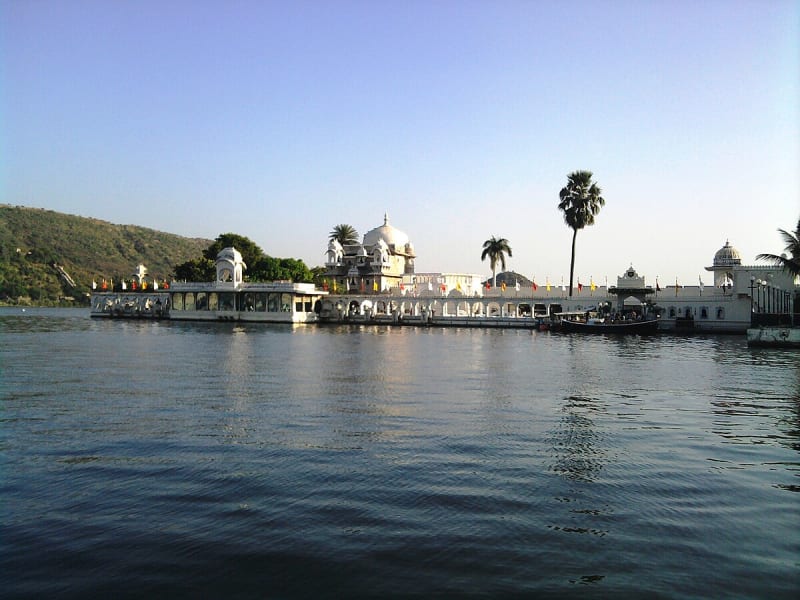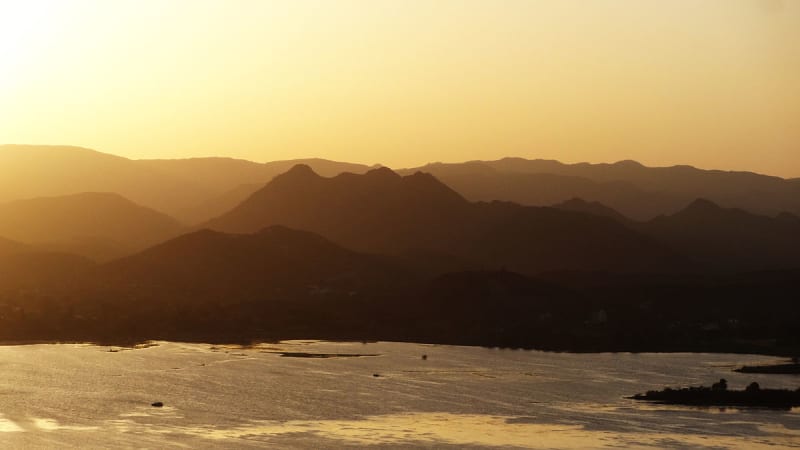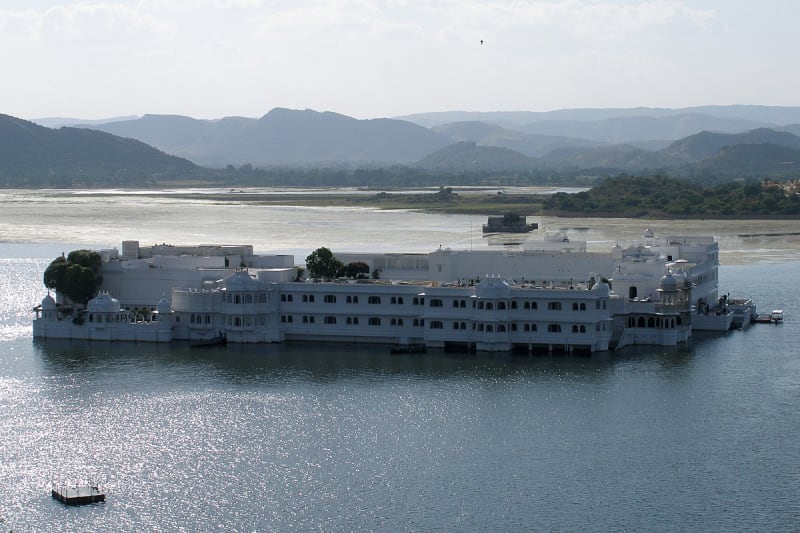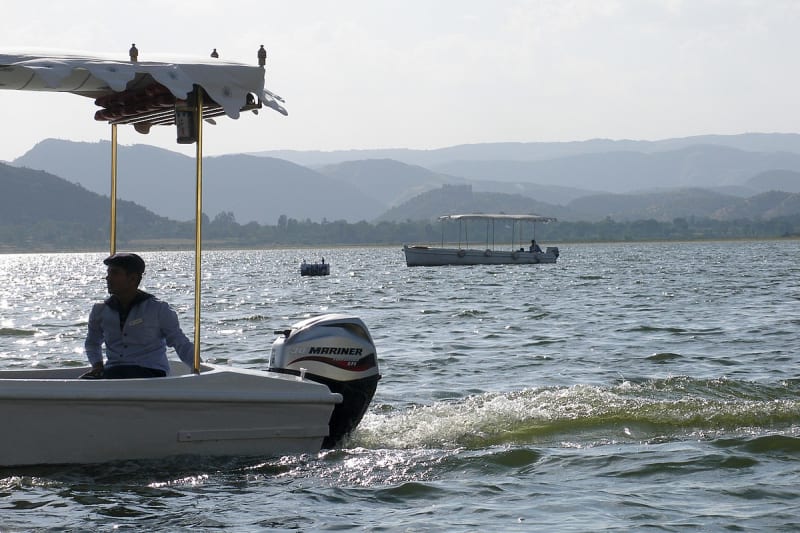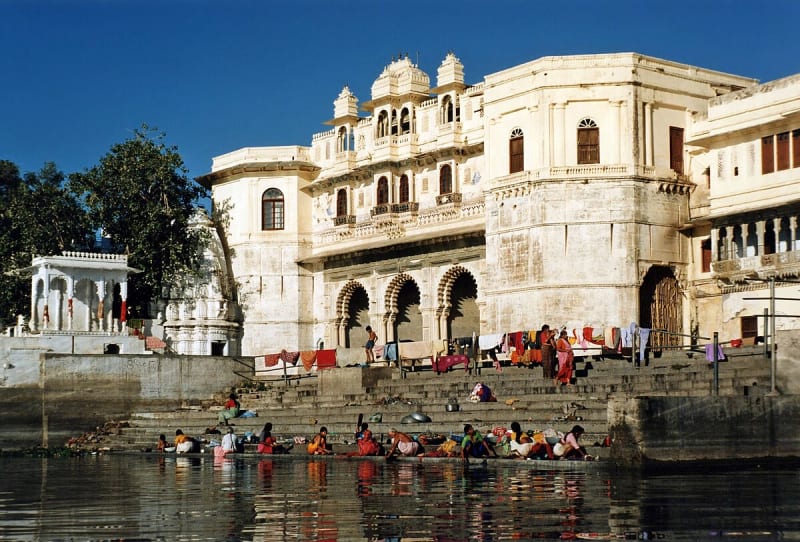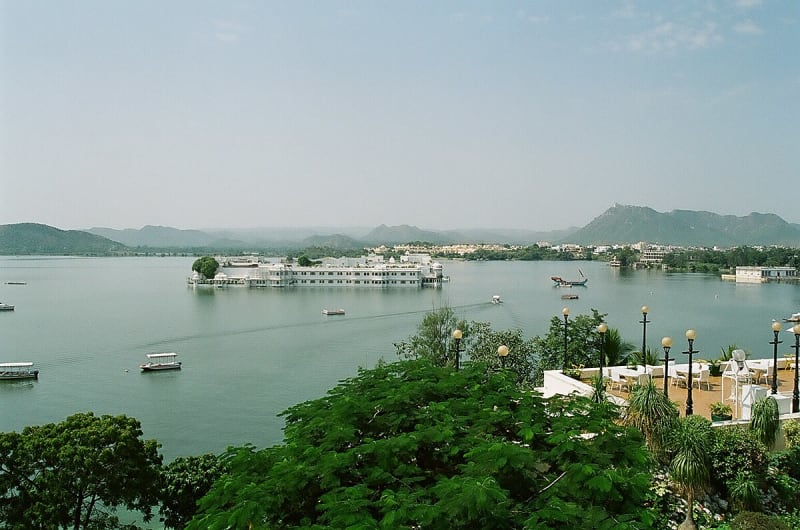Lake Pichola
Pichola is a lake near the city of Udaipur at the foot of the Aravalli Mountains. It is called the "Indian Venice". On 4 islets and along the shore there are magnificent palaces of maharajas, reflected in the lake surface. There are several more lakes in the vicinity of Udaipur. Three of them are connected by arch bridges to Pichola and Saurop lakes. The bridges were built in the middle of the 19th century.
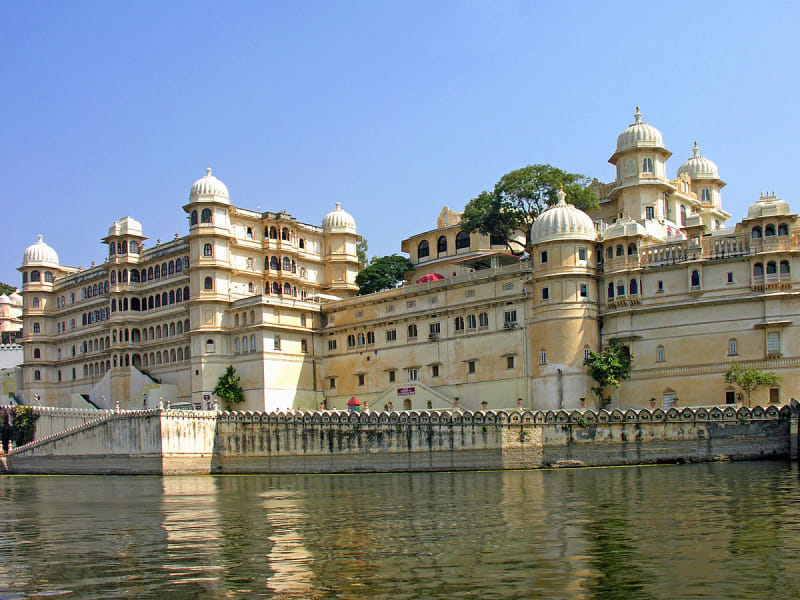
The history of Lake Pichola
Gypsies from the Banjara tribe created the lake in 1362 by building a small dam. The government of the country, where the bright sun mercilessly scorches and dries the earth for most of the year, welcomed the construction of artificial reservoirs for irrigation. Maharana Uday Singh II, who saw the man-made lake Pichola among the bright green hills, decided to found a city. At the same time, he completed the stone dam, enlarging the lake.
In 1559, Singh II rebuilt his residence near the lake. In 1568, Singh's estate in Chittorghan was captured and looted by the Mughals. Singh moved the capital to Udaipur, and built the Sad-Jangarh palace on the hill. During the construction of the city and the expansion of the lake, part of the village of Pichola, which gave the lake its name, was flooded. The lake is quite large, 3 km wide and 4 km long, the depth is small and ranges from 4 to 8 m. It dries up during a drought.
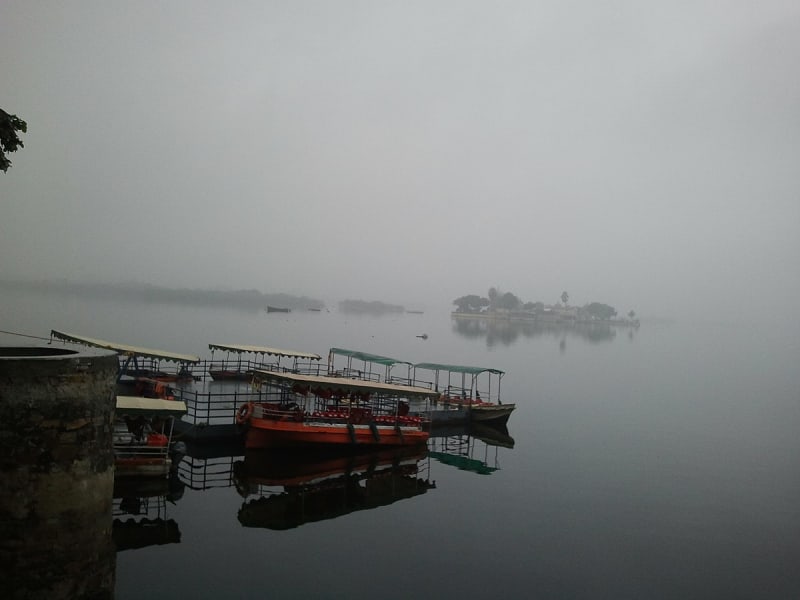
In 1754, Singh II built a magnificent palace on Jagnivas Island, which became a summer residence. The palace was called Ozerny, it seemed to float on the surface of a reservoir. In 1960, the palace was significantly expanded. In terms of beauty and splendor, it is compared to the famous Taj Mahal. The area of the palace is 15 thousand square meters. m. It now houses the luxury Lake Palace Hotel. Thousands of tourists from all over the world visit the hotel every year. This is one of the richest hotels in the world. On its territory there are courtyards, pools surrounded by mango trees, and ponds decorated with delicate blooming lotuses. Filming of the movie "Octopussy" about the invincible Bond took place in this hotel.
On the island of Jagmandir stands a red sandstone palace, founded in 1620, and bearing the same name. Karan Singh started building it, and Jagat Singh completed it. A few years ago, the palace was converted into a small hotel with fewer than 10 rooms. At night, it is illuminated in an original way, creating a romantic atmosphere. On the island stands the blue stone tower Gol Mahal, built in the 17th century. Majestic elephants made of stone surround the entrance to it. From the height of the tower, you can enjoy charming views of Lake Pichola and the nearby garden. In the tower, visitors are presented with a small exhibition telling about the history of the island and the palace.
From the island of Mohan Mandir, the ruler enthusiastically watched the annual Gangaur festival.
There is a small palace on the island of Arsi Vilas. Previously, an ammunition depot was located on the island. Now there is a nature reserve, the inhabitants of which are many birds. Among them there are rare species of herons, crested ducks, cormorants, kingfishers and other individuals.
The picturesque view of Lake Pichola with a whole complex of magnificent palaces around it has been created for several centuries.
There is a legend that one of the rulers, Maharana Javan Sing, promised a tightrope walker that he would give her half the kingdom of Mewar if she walked along a rope stretched over a part of Lake Pichola. The girl took a chance and went. The rope broke, the girl fell into the lake and drowned. Before she died, she cursed Maharana's family. Whether it's related to the curse or not, the noble family really had no direct descendants, but only adopted sons.
